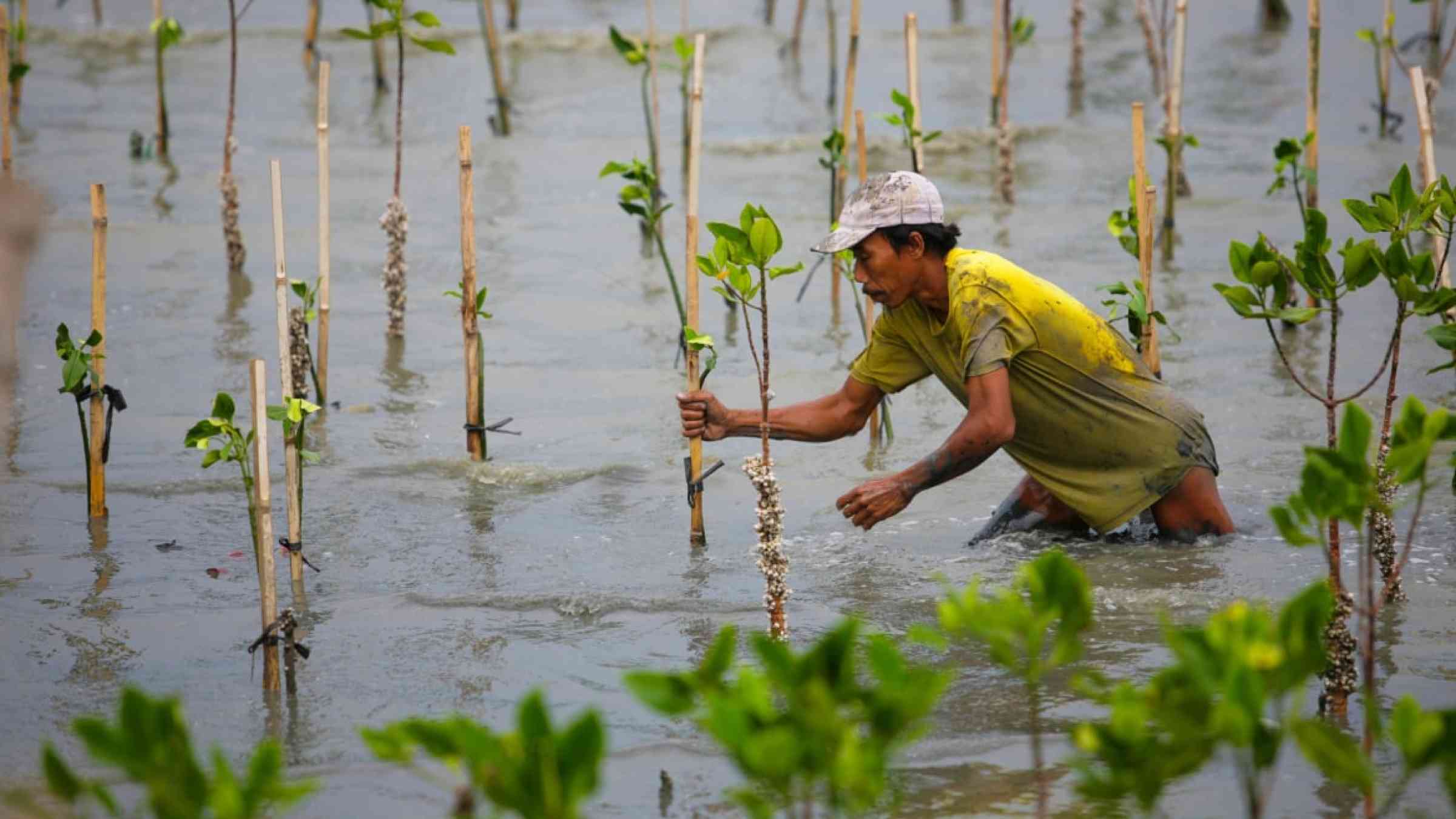Indonesia must face up to the heightened risk of drought and fire under El Niño

Research has an important role to play in managing extreme climate events
Have you noticed people talking about the weather more than usual lately? In Indonesia and across much of Southeast Asia, many people seem to be enjoying unusually warm temperatures for the time of year, as the climate pattern across the Pacific shifts from La Niña to El Niño.
Characterized by extreme events, the natural phenomena of La Niña and El Niño are triggered by sea surface temperature anomalies in the east-central tropical Pacific Ocean. Deviations of 0.5 degree Celsius or more above average temperatures in the index region (known as El Niño 3.4) lead to the kind of warmth being experienced in Southeast Asia at present. If sea surface temperature anomalies increase to 1 degree Celsius, water vapour above the Indonesian archipelago will be drawn eastwards, making the weather dry and hot.
Public opinion and awareness can act as a kind of thermometer that warns us to be prepared. From an environmental perspective, the heat is likely to be a bad sign: droughts and wildfires may be just around the corner. By early July, more than half of Indonesia had entered ‘dry season’ conditions –much earlier than usual – sparking fears of a repeat of the disastrous events of 2015.
Precarious precedent
The 2015 El Niño pattern led to wildfires that burned around 3 million hectares of forests and peatlands on the east coast of Sumatra and in Central Kalimantan. Triggered by a record-breaking ocean temperature anomaly of 3 degrees Celsius in the El Niño 3.4 index region, that disaster caused direct economic losses of around IDR 220 trillion (USD 14.7 billion), and emitted 11.3 teragrams of carbon dioxide per day during the months of September and October 2015. This was higher than the emissions of all 28 European Union countries combined, which amounted to 8.9 teragrams per day over the same period. The financial and ecological losses resulting from these emissions remain incalculable.
Eight years later, we should be particularly wary of this year’s El Niño, as long-term records show such extreme events occurring periodically over intervals of around a decade.
However, it’s not yet clear how likely that is to happen – largely because we’re lacking some critical data about climate patterns elsewhere. According to Australian Bureau of Meteorology observations, temperature anomalies in the El Niño 3.4 region reached 0.9 degree Celsius in early June, and are expected to reach 1.6 degrees Celsius in August, and 2.0 degrees Celsius in October; the US National Oceanic and Atmospheric Administration (NOAA) has made a similar prediction. This will mean a longer-than-normal dry season.
But, on the western side of the Indonesian archipelago, a similar process called the Indian Ocean Dipole (IOD), which is also controlled by sea surface temperatures, is also taking place. This often-forgotten process could bring about two possibilities. If the western part of the Indian Ocean warms like El Niño 3.4, this ‘positive IOD’ will draw water vapour from Indonesia – but in a westerly direction – and cause even drier weather after water vapour has been drawn eastwards by anomalies in the Pacific Ocean. Conversely, with a negative IOD, the Indonesian archipelago would receive additional water vapour from the Indian Ocean, thereby lessening or even negating the El Niño. So far, a positive IOD looks most likely – with concerning implications for weather in Indonesia.
These uncertainties show that relying on El Niño predictions alone is inadequate – we also need to increase and integrate our knowledge of IOD phenomena occurring at the other end of the Indonesian archipelago. Water vapour transfers between Australia and the Indian Ocean must also be observed
Facing up to the threat
To capitalize on growing public awareness of the risks and implications of the shift to El Niño, it will be necessary for Indonesia’s institutions to respond with strong and clear public policies from above.
The same applies to research institutions, such as universities, which are major pillars in decision making and determining public policy. Networks with international knowledge centres should be strengthened to facilitate the transfer of data and information; the current research permit system, and punitive regulations for cooperation, should be replaced progressively with incentives for collaboration that prioritize fairness and equity. We must allow our researchers and scientists to take the lead on the pressing issues that sit at our doorstep. This also requires sufficient funding to support the production of high-quality research.
During El Niño events, vast sums have already been – and will again be – spent on firefighting when fires break out. The Indonesian government’s recent expenditure on equipment, resourcing and coordination for the country’s 11,000 volunteer firefighters is a commendable effort to this end.
However, fire prevention – which is arguably even more important – still attracts little budget support. It is time for a shift in funding priorities to enhance the scientific capacity of Indonesian researchers. If we can quickly and readily buy or rent helicopters, water bombers and other sophisticated equipment, then why must Indonesian researchers wait for funds that are only disbursed when it is time for them to be accounted for? If this El Niño turns out to be weak and not too damaging – as we hope – Indonesia must not waste the opportunity to help its people understand the issues, and it should support its researchers with sufficient resources and funding to deliver the best-in-class research of which they are capable.